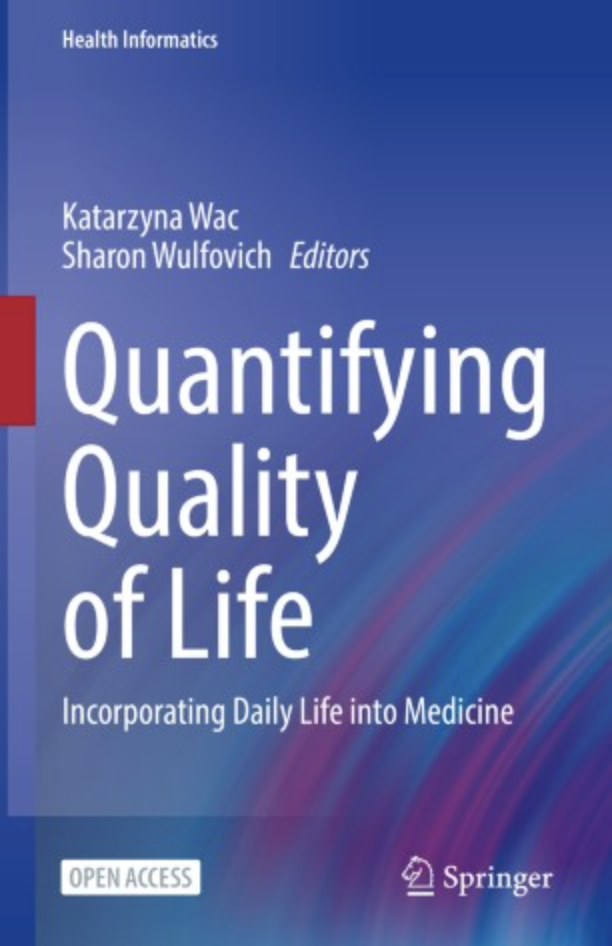
The ‘gold standard’ way to assess the quality of life (QoL) in adults implies the use of self-reports. Research presented throughout our 2022 book shows that there are many self-report-based instruments available for measuring overall QoL and domains contributing to it. It results in variability between these instruments. The table below provides an example of current measures used to assess an individual’s life quality via a self-reporting method. The measures presented below were designed for adults, are generic (i.e., non-disease or context-specific), and are available in an English version. Our initial goal was to include “global” measures, inclusive of the QoL domains such as WHOQOL-BREF, EQ-5D, and SF-36 (although the two last ones focus mostly on the health-related QoL). Along with the analysis, we have deduced that it is impossible to focus solely on measures that include items encompassing all 24 WHO QoL domains presented in the chapters of this book. Therefore, we have identified multiple examples of frequently used measures for each QoL domain, with the awareness that there can, and will, always be further aspects to assess and that the domains are often interconnected. Hence, this table does not encompass all available measures for each possible domain. Instead, we summarize the findings in this book, commit to updating it as new measures are identified, and welcome submissions of any (new) relevant measures via email.
Current work areas in our QoL lab include the design and development and validation of the quality of life technologies (QoLT), that co-calibrate the self-reported (referred to as PROs) with technology-reported outcomes (referred to as TechROs, also called Digital Health Technologies (DHT) by FDA); this will allow for greater accuracy, clinical relevance, and robust and meaningful assessments of QoL. In the near future, we hope to expand the table below matching the self-reported measures with technology-reported ones; we welcome collaborations on that topic.
| Instrument Full Name | Acronym | Domains | Number of Items | First Published | Reference | Technology-based Assessment Notes |
| EUROQOL-5D-5L | EQ-5D-5L | physical, psychological | 5 | 1999 | DOI | TBP |
| Short Form 36 | SF-36v2 | physical, psychological, social | 36 | 1988 | DOI | TBP |
| World Health Organization Quality of Life | WHOQOL-BREF | physical, psychological, social, environmental | 26 | 1988 | DOI | TBP |
Note: Table is being constructed as of May 2021
We hope that this list (and this book as a whole) helps researchers, medical and health practitioners, and policymakers select measures to assess the individual’s QoL. Overall, we suggest that the use of measures should be confirmed before they are used as an outcome in a research study or interventional program. Potential users of the measures are encouraged to conduct brief qualitative research with a small representative sample of the population of interest that can help to understand the QoL concepts that are most meaningful for the individuals and relevant to be evaluated from the point of view of the intended use of the measure (e.g., are clinically relevant and/or are informing the regulatory decisions). This information can then be used to select a suitable measure from the list. The specific choice of the measure may also be further supported by the methodology presented by, for example, De Vet, HCW, et al. (2011), or Lam, K. (2010), guiding the choices with questions like “Is QoL a primary, secondary or confounding outcome?” Additionally, users of the measures are encouraged to contact the measure developer, content copyright owner, or distributor for any additional information.
Additional Resources (mostly health-related QoL)
Spilker, B., et al. (1990). Quality of life bibliography and indexes. Medical care, 28(12), DS1-DS77. DOI
Gill, T. M., & Feinstein, A. R. (1994). A critical appraisal of the quality of quality-of-life measurements. JAMA, 272(8), 619-626. DOI
McDowell, I. (2010). Measures of self-perceived well-being. Journal of Psychosomatic Research, 69(1), 69-79. DOI
Lindert, J., Bain, P. A., Kubzansky, L. D., & Stein, C. (2015). Well-being measurement and the WHO health policy Health 2010: Systematic review of measurement scales. The European Journal of Public Health, 25(4), 731-740. DOI
Linton, M. J., Dieppe, P., & Medina-Lara, A. (2016). Review of 99 self-report measures for assessing well-being in adults: exploring dimensions of well-being and developments over time. BMJ Open, 6(7). DOI
Costa, D. S., Mercieca-Bebber, R., Rutherford, C., Tait, M. A., & King, M. T. (2021). How is quality of life defined and assessed in published research?. Quality of Life Research, 1-13. DOI
Choi, E., et al. (2017). Determinants of Health, Goinvo – Designing the Future of Healthcare, 26 July 2017 WEB
Health-related QoL database by Mapi Research Trust WEB
COMET Initiative: Core Outcome Measures in Effectiveness Trials WEB
PROMIS: Patient-Reported Outcomes Measurement Information System WEB
Healthy People 2020 (U.S. Department of Health and Human Services): Health-Related Quality of Life & Well-Being WEB
EUPATI: Patient Engagement Through Education WEB
We welcome submissions of any (new) relevant measures and resources via email.